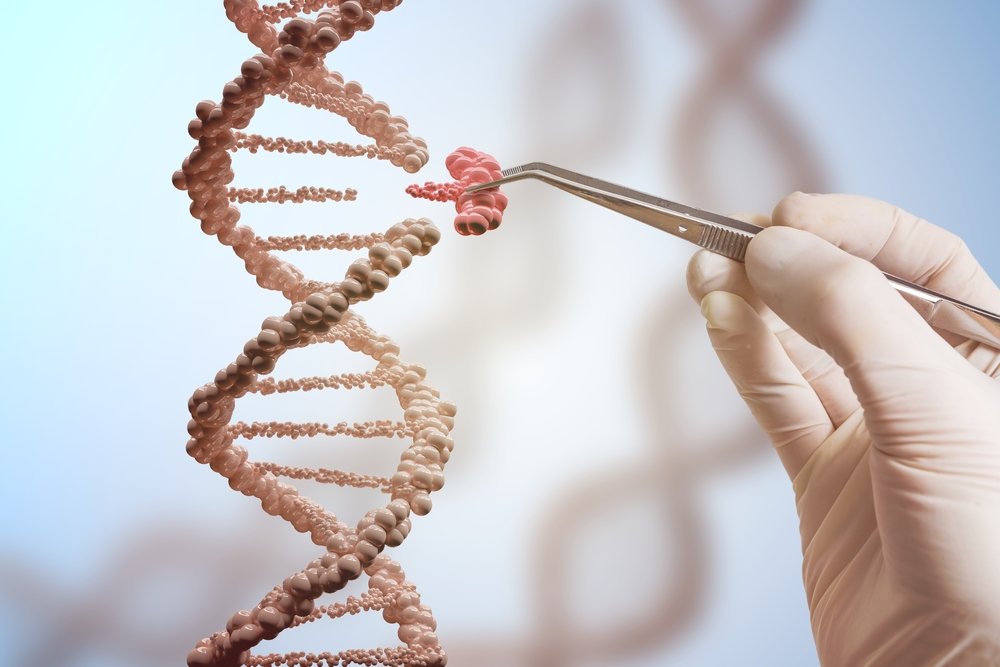Updates From Trial of AveXis SMA1 Gene Therapy Trial Show Impressive Results in Most Infants
Written by |

Results from the first clinical trial of AVXS-101, a gene therapy for infants with spinal muscular atrophy (SMA) type 1, reveal dramatically improved survival as well as motor skills in most of the babies involved in the drug’s first clinical trial.
Data presented by AveXis at the six-day AAN 2017 Annual Meeting — which wraps up April 28 in Boston — also indicated that infants treated earlier achieved developmental motor milestones more quickly. This has led researchers to urge newborn screening for SMA1 as soon as treatment becomes available.
Studies also showed that antibodies against the gene therapy carrier — which could potentially render the treatment ineffective — were rare in this group.
The Phase 1 trial (NCT02122952) is treating 15 infants with SMA1 with the gene therapy called AVXS-101, developed by AveXis of Bannockburn, Ill. The treatment consists of a harmless virus that carries a functional SMN gene. The virus is injected into the bloodstream, and enters the central nervous system to deliver the gene. All children were six months old or younger; 12 of the 15 received a higher dose of AVXS-101, while three received a lower dose.
Since the trial was an early human study, safety is the main outcome measure. But researchers also are evaluating the treatment’s efficacy, mainly as the time from birth to an “event.” Researchers defined an event as death or at least 16 hours per day of required breathing support (ventilation) for 14 consecutive days in the absence of other reversible illness.
Survival, defined as eliminating the need for permanent ventilation, was the focus of a study which also looked at developmental milestones. Researchers analyzed data up to Sept. 15, 2016, the cutoff date. As of that date, all patients were alive, and only one — in the low-dose group — required ventilation at 28.8 months of age. At 13.6 months, none of the babies required ventilation. This is an age at which 75 percent of untreated SMA1 infants have either died or are on ventilation, according to earlier studies.
Researchers saw improvements in motor skills in the higher-dose group. SMA1 patients rarely score higher than 40 in an assessment of movement ability called CHOP-INTEND. But in the trial, 11 of the 12 children in the high-dose group had higher scores, with many showing head control.
In addition, eight could sit unassisted and two could crawl, stand or walk independently — abilities never seen in untreated infants.
An analysis of the CHOP-INTEND scores in the high-dose group — which AveXis has proposed to be used in future trials — showed that nine out of 12 children had a score of 50 or higher. Since it is extremely rare for SMA1 infants to scores that high, the researchers analyzed how the scores corresponded to the children’s ability to sit unassisted. They noted that scores of 50 or higher were more likely in babies that can sit.
The treatment, they said, seemed to be more effective when given at an early age and early on in the disease course. Children treated with the higher dose at earlier time points achieved motor milestones more quickly.
A third presentation focused on antibodies against the viral carrier. Earlier studies have noted that such antibodies are rare in children and young adults. At study start, all children were screened for antibodies, with researchers finding excessive levels in three of the 16 infants initially screened.
Two of these infants were later retested, and had sufficiently low levels to be included in the study. Only one infant was excluded because of high antibody levels. Findings of initially high antibodies, which may be transferred from the mother during pregnancy or breastfeeding, often fall to lower levels, the study noted. It also suggests that antibodies will not be a major problem, or one that will prevent treatment.
AveXis has earlier released safety data from the study showing the treatment to be safe and well-tolerated. Earlier data also focused on aspects of independent sitting and other motor skills.






